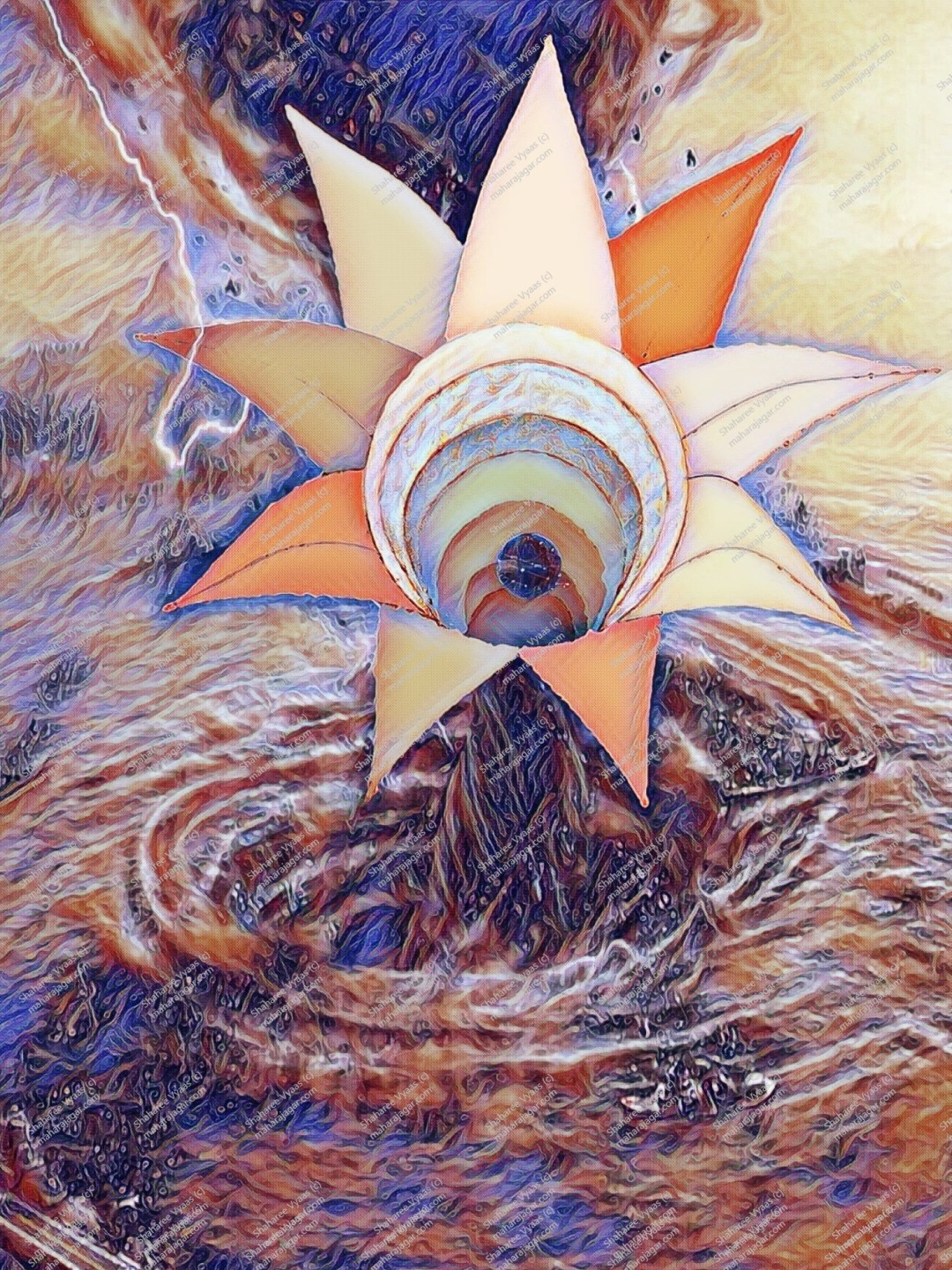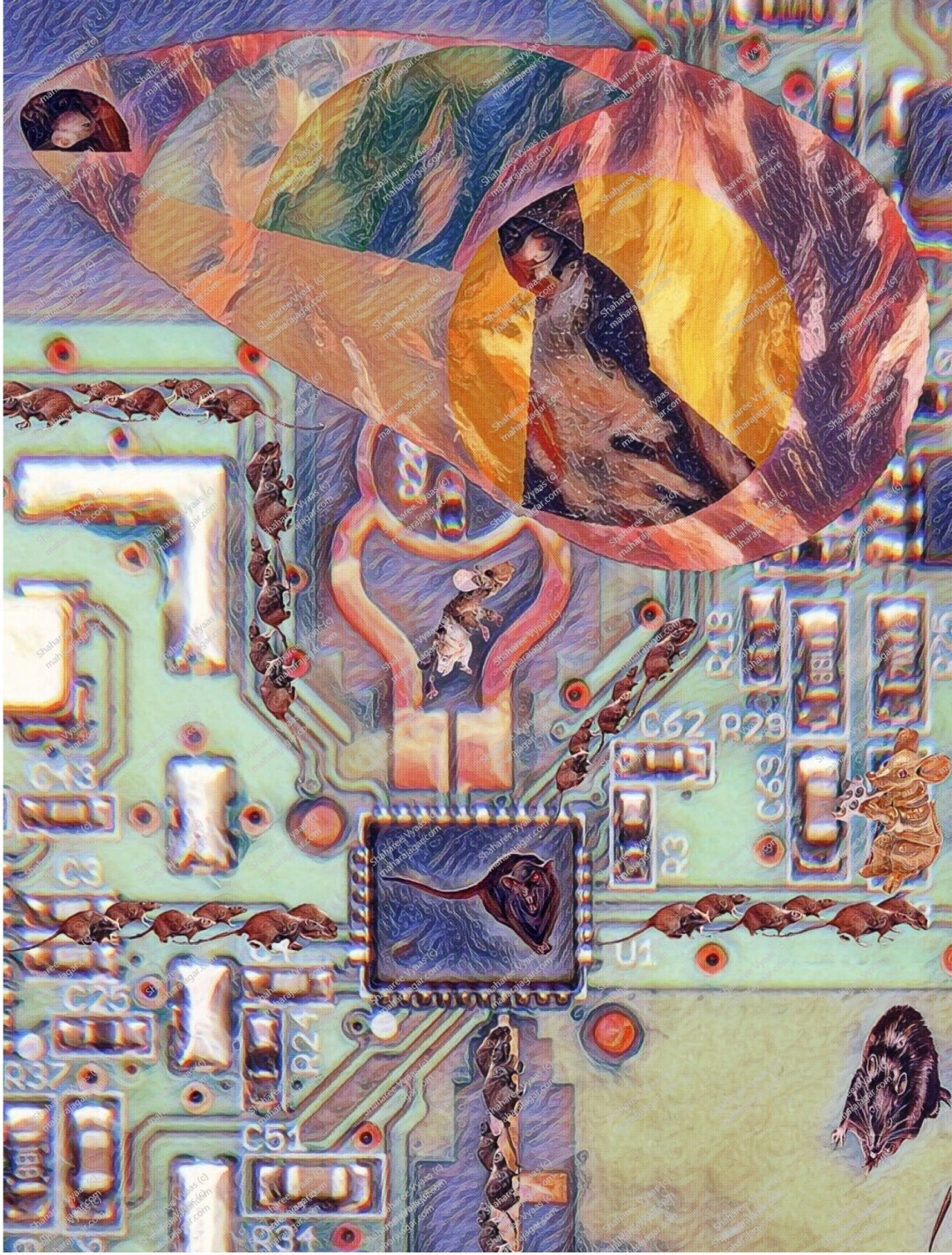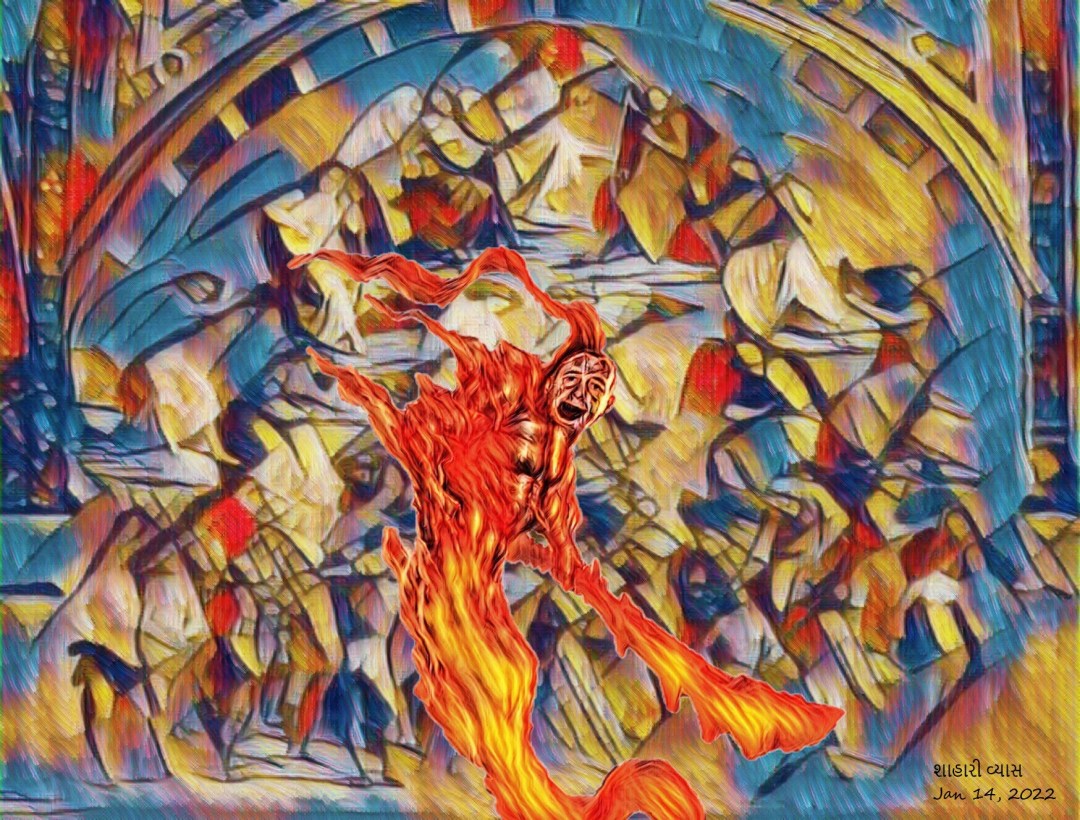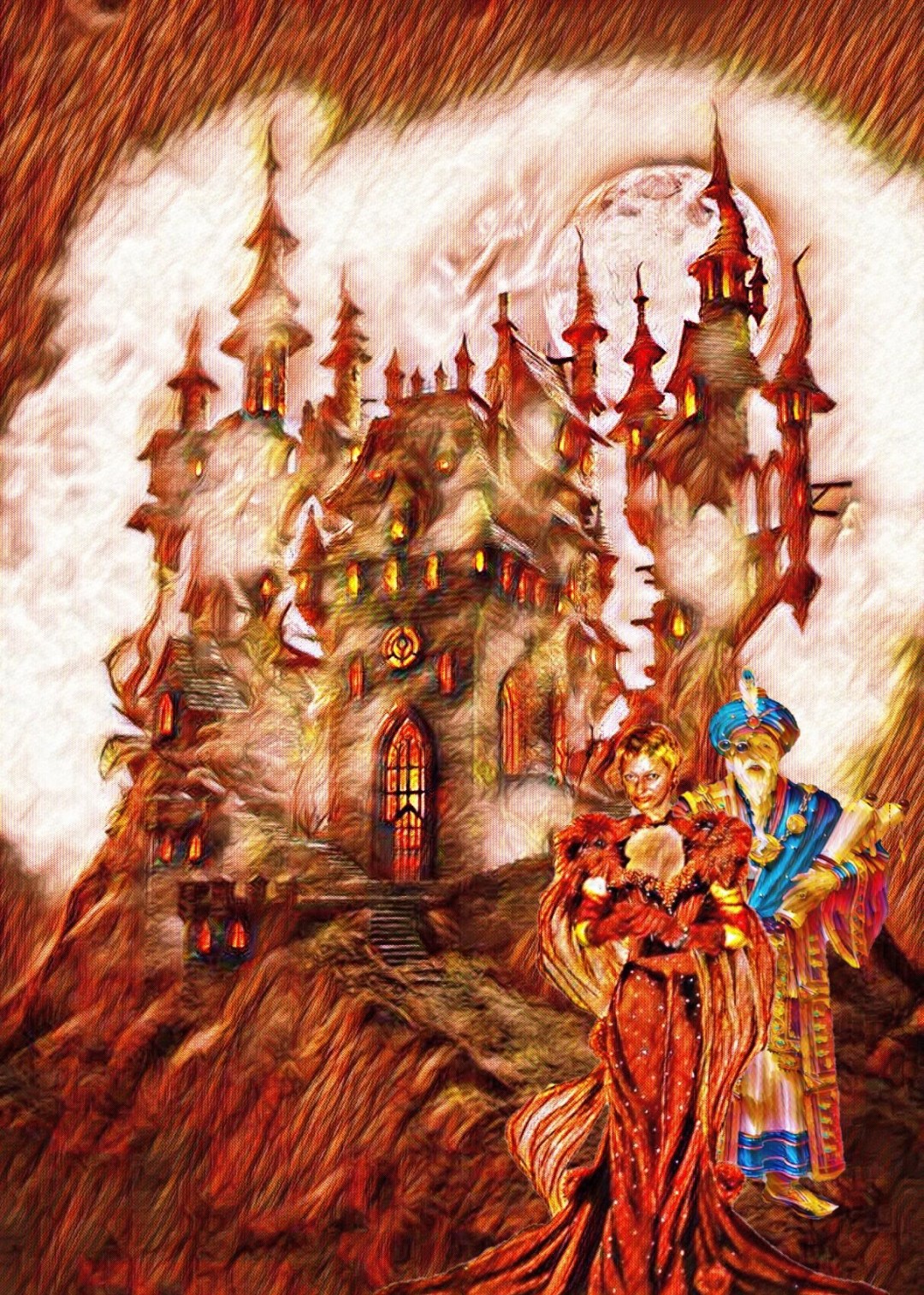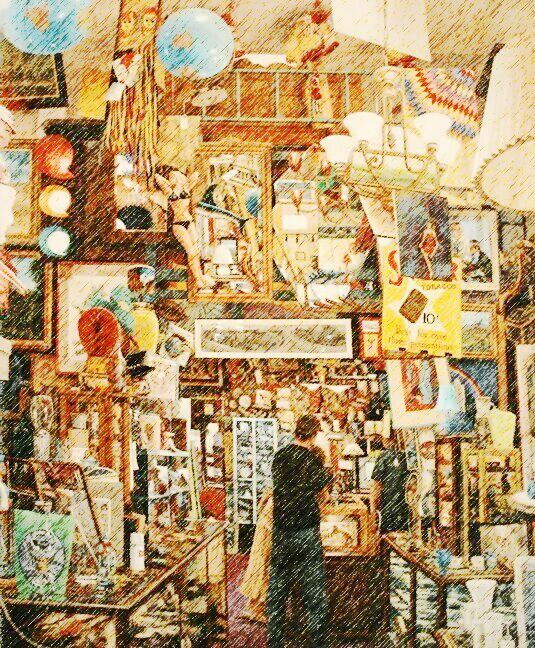Salvador Dali, the surrealist artist known for his unorthodox theatrics, had an unwavering belief in his own genius. From a young age, he aspired to be admired by the world, even if it meant being despised and misunderstood. Born to a middle-class family in Spain in 1904, Salvador Dalí displayed ruthless ambition from an early … Continue reading Salvador the Showman
The Clan. Acrylic on a black canvas 80 x 60 cm by Shaharee Vyaas (2023).
The Clan is the third installation of a series of five #paintings I’ve made around a time that coincides with the yearly festival of #Halloween 2023. The frames contain some earlier reflections I had about the aftermath of the recent #pandemic. The stylistic concept deviates substantially from most of my other works, although parallels can … Continue reading The Clan. Acrylic on a black canvas 80 x 60 cm by Shaharee Vyaas (2023).
Imperfection is a Form of Freedom. Acrylic on canvas 40.6 x 40.6 cm by Shaharee Vyaas.
"I’m fighting myself. I know I am. One minute I want to remember. The next minute I want to live in the land of forgetting. One minute I want to feel. The next minute I never want to feel ever again. - Benjamin Alire Saenz, Last Night I Sang to the Monster." This painting is … Continue reading Imperfection is a Form of Freedom. Acrylic on canvas 40.6 x 40.6 cm by Shaharee Vyaas.
The elusive Self. Acrylic on canvas 40,6 x 40,6 cm by Shaharee Vyaas.
We perceive ourselves as autonomous, discrete individuals with an unchanging inner self that persists throughout our lifetime, but this is an illusion. Your inner self is a constantly evolving product of what you've done and can do. Your inner self isn't made up by what you have been told by others, not as what you … Continue reading The elusive Self. Acrylic on canvas 40,6 x 40,6 cm by Shaharee Vyaas.
Wokean Nation. Acrylic on canvas W 30 cm x H 20 cm by Shaharee Vyaas.
#Woke and #anti-woke #crusaders are the two prominent movements that give shape at the current #political landscape. Both #movements #cancel the works from artists and writers that don't wholeheartedly support their rhetoric. It is accompanied with violent street clashes between two parties with opposite views about fundamental values. One wants to curb the rising gun-violence … Continue reading Wokean Nation. Acrylic on canvas W 30 cm x H 20 cm by Shaharee Vyaas.
The Dark Sides of Religion (part 1/5): Ascetism. Acrylic on canvas 45 x 45 cm by Shaharee Vyaas.
Since religious fundamentalism is on the rise in all segments of our society, I decided to dedicate some of my artistic reflections to the subject that motivates some extreme fundamentalists to believe that their religion gives them the right to tell everyone else what they are and are not allowed to do and commands them … Continue reading The Dark Sides of Religion (part 1/5): Ascetism. Acrylic on canvas 45 x 45 cm by Shaharee Vyaas.
Last Supper on Utila
This painting stands at the cradle of my becoming as an artist. It is inspired by a painting of Dali (The Last Supper) and contains all the main actors that have got a heavy influence upon the way I developed my personal style and philosophy. In the center figures Leonardo da Vinci, which I consider … Continue reading Last Supper on Utila
Relaxing at Utila’s South Shore
The South shore of Utila is separated by a small channel and a lagoon from the main part of the island. Not astonishingly it's the residency of Utila's most recluse and privacy minded expats. It has however a popular beach bar called Neptune's that can only be reached by boat from the main part of … Continue reading Relaxing at Utila’s South Shore
Utila’s Galactic Nomads
Utila is a travel destination that lies a little of the beaten path. Hence it's inhabited and visited by a very eclectic crowd of pirates, outlaws, artists, digital nomads, and a couple of aliens who shipwrecked and just washed up here.
Reading in the Dark
Reading in the Dark is a novel by Seamus Deane in 1996. The title of the novel is taken from a section in which the boy is alone and struggling to read in the dark set against the violence of Northern Ireland in the 1940s and 1950s. The boy narrator grows up haunted by a … Continue reading Reading in the Dark
The Birth of the Cyberspace
The term cyberspace was first used by the American-Canadian author William Gibson in 1982 in a story published in Omni magazine and then in his book Neuromancer. In this science-fiction novel, Gibson described cyberspace as the creation of a computer network in a world filled with artificially intelligent beings. The real cyberspace is a global … Continue reading The Birth of the Cyberspace
Here be Rats …
This artwork is part of a series of five paintings that is called Cybernetic Musings. In these series I explore recent developments into the cyberspace. The title of this work refers to an old annotation that medieval cartographers made upon unexplored territories "Here be dragons" and also refers to one of my own works where … Continue reading Here be Rats …
Cryptomathics: the complexity of simplicity.
Ours is the Age of Science; but from a study of most contemporary art, one would find it difficult to infer this most obvious of facts. Contemporary literature, graphic arts, and music, contain remarkably few references to contemporary science—few references even to the metaphysical and ethical problems which contemporary science has raised.A survey showed that … Continue reading Cryptomathics: the complexity of simplicity.
Sometimes Art is just Life.
I would like to start this post with a quote by Ai Weiwei: Life is art. Art is life. I never separate it.This comes after long weeks of fretting over the fact that I’m in a rather turbulent period in my life where lots of changes happen, prohibiting me of having time to dedicate on … Continue reading Sometimes Art is just Life.
About Artificial Intelligence.
Evolutions in technology and knowledge have always provoked a conservative counter reaction by people who see their current ways of doing things and earning a living being threatened. The latest evolutions in the information technology isn’t any different in that aspect as the introduction of the printing press was for the mediaeval scribes or the … Continue reading About Artificial Intelligence.
HOW NOT TO GET DEPRESSED AS AN ARTIST
Fighting with Depression (acrylic on canvas 72’ x 48’, 2016) is a canvas that I created when I was dissatisfied with the lack of recognition my work received. By the time I finished the canvas I felt already in a better mood, so I added the swallow´s nest in the storm lantern. Don’t ask me … Continue reading HOW NOT TO GET DEPRESSED AS AN ARTIST
So you want to be Rich and Famous. Seriously?
This post 's aim is to make it easier to understand why fame & fortune is not easy to manage.
Many are Called, Few are Chosen.
This painting (acrylic on canvas 24' x36') illustrates how the art-world functions. Many are called, only few are chosen. A variety of pages where artists post are filled with delusional pep-talk. The latest example was a debuting writer who got ecstatic about her first rejection letter from a publisher. She saw it as a proof … Continue reading Many are Called, Few are Chosen.
The Cryptomathician and his Lady in Red wish you a Happy Halloween
Halloween is more than just a party occasion: it´s a time of the year that many Christians are commemorating their departed relatives and friends.
The Flea Market as an Artistical Biotope.
Since ages are the flea markets the natural biotope of artists as a place of inspiration, to buy ingredients for their art, or to sell their creations.










